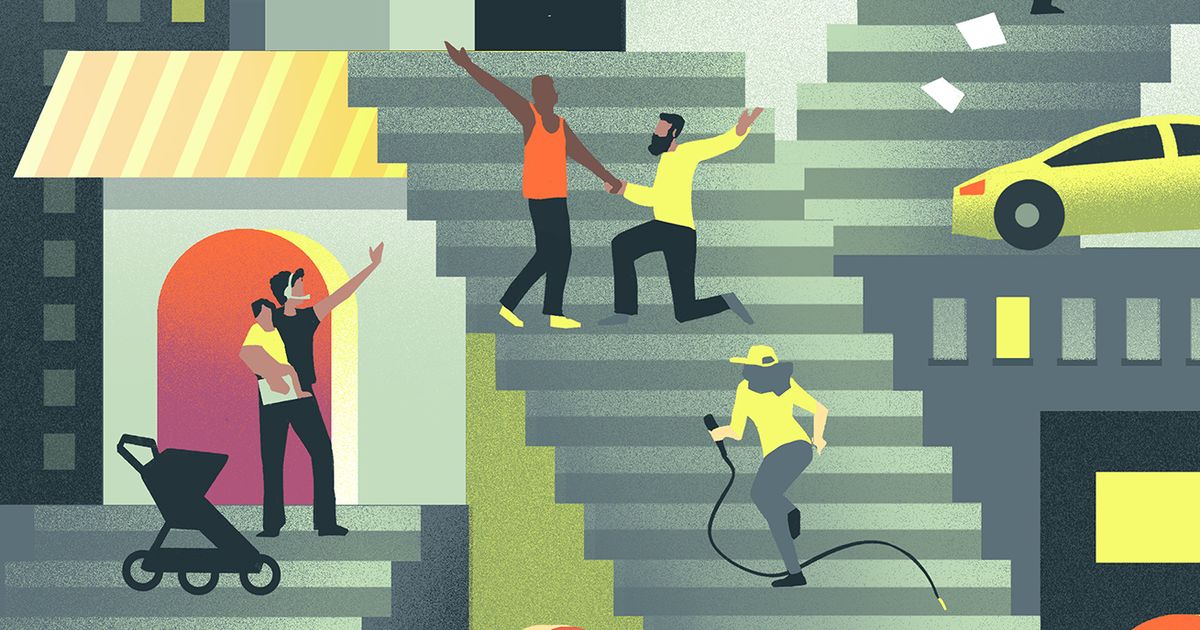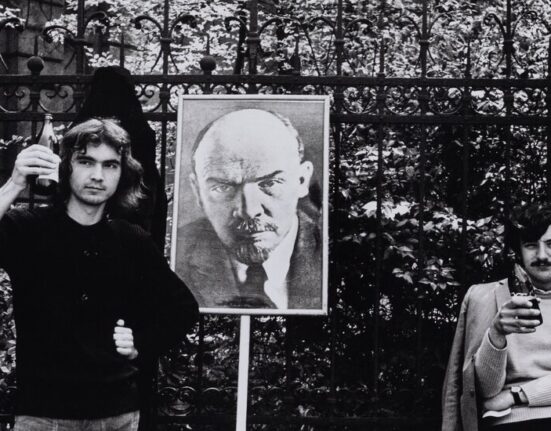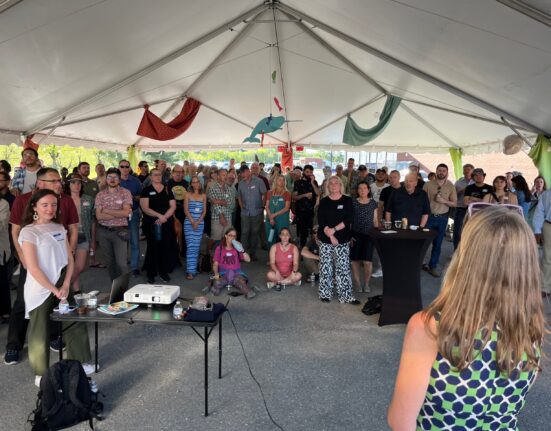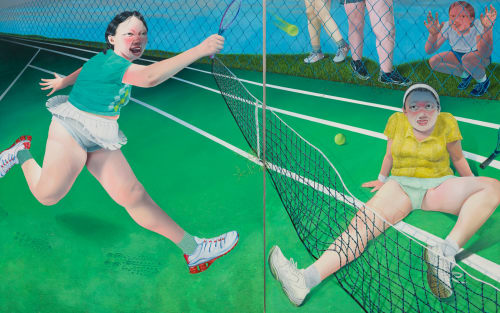Editor’s note: This story is part of our Affordability for Artists package, which explores the impact of Seattle’s soaring cost of living on the local arts scene, why it matters and what may help.
Seattle abounds with stories of artistic accomplishment: The playwright who won a slew of awards. The bestselling author. The musician who performed in New York to rave reviews.
But success stories are just one side of the coin.
The playwright spends more than half of his roughly $32,000 annual income on rent and utilities. The author, forced to take an office job a year and a half into the pandemic, now barely has time to write. And the musician? He moved away.
“My career is going great,” said the musician, Ahamefule J. Oluo, who moved to the Olympic Peninsula last year. But “I cannot afford to live in Seattle. The city I am from.”
According to a new survey conducted by The Seattle Times, even some of the region’s most successful artists are struggling to keep up with the skyrocketing cost of living. In the survey, creatives of all stripes, success and income levels say that — faced with rising housing prices, inflation and a weakened local art infrastructure — making a living as an artist in King County is now a Sisyphean endeavor that leaves them stressed out, exhausted and, in some cases, contemplating leaving the region.
For The Seattle Times 2024 Affordability for Artists Survey, we asked King County artists about their experiences living and working here. We received responses from 647 professional artists from all corners of the county working in a wide variety of art forms, from visual art to music, writing to film.
While Seattle’s affordability crisis has been top of mind for local artists for years as the city boomed, the survey sheds new light on just how precarious life as an artist has become in the last few years.
It also brings into stark relief the impact of the one-two punch of the pandemic-plus-inflation on individual artists, rather than arts organizations, the traditional focus of many recovery conversations. Just keeping a roof overhead has been a particular challenge. A majority of respondents spend a big chunk of their income — for some more than half — on increasingly expensive housing. Many have taken on other jobs, leaving less and less time for creative work.
What emerges from the hundreds of responses is a picture of a sector suffocating from a lack of oxygen needed to sustain Seattle’s creative lifeblood. And that could endanger the region’s future vitality: This kind of cultural brain drain — creativity and energy being sapped — is no less damaging to Seattle’s cultural fabric than physical bodies leaving the city.
“One of the biggest selling points that allowed Seattle to become the city it is today had a lot to do with this arts community,” said longtime Seattle artist Inye Wokoma.
There’s our reputation as an internationally acclaimed hub for studio glass art. Or the fact that we’re a UNESCO City of Literature. Or take grunge music: “It helped to define Seattle as an interesting place people want to live,” Wokoma said. Seattle “will continue to be a beautiful place. … But will it be an interesting place? I feel like it’s an open question at this point.”
Three jobs, zero rest
Food, housing, gas: If you live in the Puget Sound area, we don’t have to tell you that prices of, well, everything, are up. That’s true too for theater artist Ayo Tushinde. With one exception: their labor. “Everything got more expensive but me,” they said.
Tushinde is one of many artists who say wages in the cultural sector, traditionally already low, haven’t caught up with rising housing prices and inflation. (June prices in the Seattle-Tacoma-Bellevue area increased 3.8% from last year, exceeding the 3% average U.S. inflation rate.) Performers are often paid in stipends that don’t reflect hours worked, and visual artists depend on fluctuating sales. Grants, if you can get them, often don’t cover the real cost of a project. Surveyed artists say they work on average about 240 hours a year for free — the equivalent of roughly four-and-a-half hours for every 40-hour workweek — just to get their art out there. The math just doesn’t work out.
While many say they work other jobs in education, arts administration, tech and other sectors, it’s often still not enough. (Most respondents have at least one other job, and roughly one in five say they have multiple other jobs.)
Tushinde, who’s performed for Seattle Shakespeare Company, ACT and other local theaters, works at a catering company between shows to pay the bills. They also house- and pet-sit and took on another job delivering groceries for Instacart during the pandemic. They’re currently also doing marketing for a local bus tour company before rehearsal starts later this summer. It’s a lot. “I have to lose sleep to do the other jobs that pay the bills,” they said. “It really feels like, nowadays, rest is for the privileged.”
But even that patchwork of jobs — often taken on in an effort to keep a flexible schedule to allow for performances and other art events — doesn’t always amount to a livable wage. Of the 611 respondents who shared this information, about 60% say they make less than $50,000 a year and about 80% make less than $75,000.
Per census data, the median earnings of King County residents over 16 years old was $66,020 in 2022. The median earnings for full-time, year-round workers in the county was $90,204. According to the MIT Living Wage Calculator, the “living wage” for a single adult in this area works out to $59,696 a year, while an analysis of Zillow rent data by consumer news website ConsumerAffairs puts the salary needed for a single adult to live comfortably here at $87,146.
On top of that, artists’ incomes can fluctuate wildly, making it difficult to save, apply for housing or plan for the future, including starting a family, owning a home or thinking of retirement. Nearly 40% of respondents say they have only one month or less of housing expenses saved.
It is, as one respondent put it, “stressful and exhausting.”
Many respondents depend on a higher-earning partner or some other type of family support. “I’m able to continue to be an artist because I have the privilege of being married to someone who makes enough money for our family to live on,” said a Seattle-based writer, actor and director, among three artists in this story who declined to be named due to fear of professional repercussions. “I know a lot of artists who are in similar situations. There’s the ‘tech partner’ and then the artist. This impacts who can afford to be an artist and pursue that kind of career.”
Those who can’t rely on a partner often find themselves trapped in a constant hustle to keep up with the increased cost of living, and that eats into the time — and brain space — left for making art. Honing craft is forced into the margins.
“I find it harder and harder to write. The day job, the three hours on the road every day due to traffic, the financial worries,” said author and playwright Kate Danley. “The Maslow’s Hierarchy of Needs isn’t being met and the upper-level thinking is tough.”
Fever pitch
Overwhelmingly, respondents say housing is the No. 1 cost that has become more burdensome over the last two years. And they spend a lot: 40% (of 597 people who responded to this question) say they spend more than half of their income on rent or mortgage plus utilities; and another 39% of question respondents spend more than one-third. The U.S. Department of Housing and Urban Development considers households that spend more than 30% of their income on housing as cost-burdened, and those that spend more than 50% severely cost-burdened. (Roughly 34% of Seattle area households were housing cost-burdened in 2022; about 16% severely cost-burdened.)
Just over one in four of the 636 people who answered a question about moving said they had to move within the last two years due to rent increases or housing costs, especially respondents below age 34.
Of those artists that work out of a studio (382 people), about 40% had to leave those creative spaces in the last two years because they couldn’t afford it anymore. Multiple people note they now work from home. Plus, spaces to show, create and rehearse are limited and expensive. About half of all respondents indicate that the cost of rehearsal and studio space has become more burdensome in the last two years.
Some of these issues aren’t new, nor are they limited to Seattle. But, artists say, in this exceptionally expensive region, these problems have reached a fever pitch the last few years. A large majority of longer-tenured artists say things are more difficult now than when they got their start more than five years ago.
“As a middle and high school art teacher and working visual artist, I moved here in 2002 because it was an incredibly affordable area that valued the arts and culture highly,” said visual artist Danielle Troy. “Now, 22 years later, my pay has doubled but my rent has nearly tripled.”
The pandemic and inflation — which usually leads to people scaling back spending on “nonessential goods,” including entertainment or art — have only added fuel to the smoldering fire. Some visual artists say sales are down. And as audiences remain below pre-pandemic levels, performers say theaters are scaling down and reducing the number of already hard-to-come-by jobs.
Some also feel like the pandemic has exacerbated a problem that has been simmering in the city for years, one that is harder to put a finger on: A general feeling of disinterest in — and lack of support for — the arts. Audiences, many artists write, are just not showing up enough. Said one painter: “It feels like Seattle residents, especially the monied folks — techies and corporate folk — either don’t know we exist or don’t care.”
“Part-time art city”
Still, respondents don’t plan to leave the region any time soon — roughly 70% of the 587 respondents who filled in the question say it’s very unlikely they’d move away within the next year. About one in 10 respondents say it’s at least somewhat likely they’ll be leaving the arts sector in the next year. Many, even those who are thinking of leaving, extol the region’s myriad boons: the natural beauty, the supportive community, their talented colleagues, the deep ties they have here. Others feel they have more to give.
At the same time, several are considering it. Some want to move away, but can’t afford it. And many others say they knew of people who had already left, suggesting we surveyed the “survivors.”
And so, what we’re seeing now is perhaps not a massive geographic exodus, but a slower bleed: People, as they spend more time and energy on moneymaking jobs, relegating art-making to a hobby or leaving the field altogether — a creative brain drain in place.
“I’ve been very active and invested in the Seattle art community for over 10 years and what I see largely is part-time artists with full-time jobs,” said one visual artist. “It’s nearly the only way artists are able to survive in Seattle without living in poverty. I believe in order to master your craft, innovate, and truly make great work, artists must be able to dedicate themselves full-time to their practice. And Seattle makes that incredibly difficult. Which is why the art scene and arts in general in the city is struggling. We are a part-time art city. And it’s underwhelming.”
But the rising prices also have other domino effects, according to survey respondents. High food and real estate costs mean there are fewer and fewer communal spaces.
“Many of the cafes and restaurants where artists gathered to talk, share ideas, and have an affordable meal at all hours of the day have been replaced with restaurants with limited hours, expensive menus, and environments inhospitable to [these] kind of exchanges,” wrote Seattle-based artist Rafael Soldi.
Or think of the bar owner who lets an unknown band play in their establishment without expecting financial return, said Wokoma. “Who can afford to do that in any of these new developments? Nobody.”
Multidisciplinary artist Launa Lea also mourned the loss of these organic networking spaces: “Artists just found one another and connected over sharing resources.” Bartering and space- and equipment-sharing is less common now, according to Wokoma, who has been making art here for more than two decades. “I find I am buying more new equipment and supplies than in years past,” he wrote. “Also, just less creative community, both intentional relationships and ambient community interactions. Makes creating feel more of an isolated experience.”
As spaces have disappeared, people dispersed, artists moved studios back into their homes, and time became scarce as people took on more jobs, the web of connections that undergirds much of the art scene has frayed, some artists said.
“The culture of the city has changed,” Wokoma said. “It’s all connected to the affordability issue.”
Cramped innovation
The consequences ripple out further than you may think, beyond individual lives and into the art we see and the city we call home.
If a musician has to move out of their rehearsal space and can only practice in their tiny apartment, that impacts the kind of instruments they can use, and thus the music they make. If they have to take on a third job, that influences how much time they can spend deepening their practice. If they can’t easily meet up with other artists, that restricts the kind of cross-pollination and collaboration that makes a creative sector thrive. If they worry about making money off a show, they may be less likely to take risks and innovate.
“I am sad I can’t afford to grow in the arts community because I have to work all the time,” said Tushinde. “It makes everything I do harder and less excellent.”
In the survey, several artists — asked to compare Seattle to other places they’d lived and worked as an artist — point out that in Chicago, housing is cheaper, transit more accessible and the arts better supported. “It meant the arts world was weirder, funner, more surprising,” said Jesse Roth, a local writer and theater artist.
Seattle, artists say, used to be a place where you could take risks. In the late ’90s, “there were low-stakes spaces to experiment and push boundaries with ideas, rather than focusing on profit,” said artist Janet Galore, who also works in tech. Now, “I worry about all the creative and important ideas that never see the light of day because our city is too hostile for independent artists.”
As the affordability crisis cramps our cultural innovation, the question is: Famed for our countercultural streak, have we lost our edge?
What we are losing — or stand to lose — can be difficult to quantify. We miss out on new ideas originating from here. On moments of connection, emotion and wonder. On the kind of arts cred that drives tourism and boosts the economy.
As Seattle actor-playwright Walden Barnett Marcus put it: “There is incredible art coming from this region — imagine how much more we could do if we weren’t worried sick about rent, food, green cards, loans, healthcare. We’ve got big dreams in the Emerald City.”
_____
This coverage is partially underwritten by the M.J. Murdock Charitable Trust. The funder plays no role in editorial decision making and The Seattle Times maintains editorial control over this and all its coverage.







